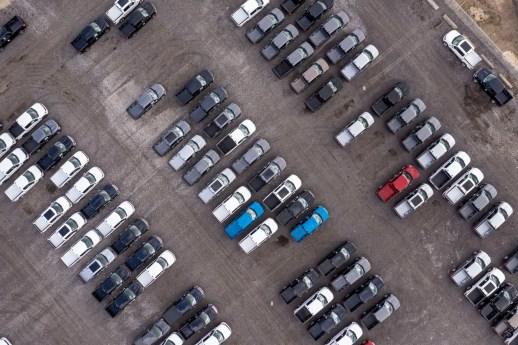Question
Toyota is stockpiling 4 months of some parts. Volkswagen is building 6 factories so it can get its own batteries. And Tesla is trying to
Toyota is stockpiling 4 months of some parts. Volkswagen is building 6 factories so it can get its own batteries. And Tesla is trying to lock up access to raw materials.
The hyperefficient auto supply chain symbolized by “just in time” is undergoing its biggest transformation in half a century, accelerated by the troubles car makers have suffered during the pandemic, reports The Wall Street Journal (May 4, 2021). After sudden swings in demand, freak weather and a series of accidents, they are reassessing their basic assumption that they could always get the parts they needed when they needed them.
“The JIT model is designed for supply-chain efficiencies and economies of scale,” says Nissan’s CEO. “The repercussions of an unprecedented crisis like Covid highlight the fragility of our supply-chain model.”

New Ford F-150 pickup trucks–unable to be sold because of the global shortage of semiconductor chips
The basic idea of JIT, as we explain in Chapter 16, is avoiding waste. By having suppliers deliver parts to the assembly line shortly before they go into a vehicle, auto makers don’t pay for what they don’t use. They save on warehouses and the people to manage them. But as supply chains get more global the system has grown brittle. The crises are more frequent.
Automakers don’t want to replace JIT entirely, because the savings are too great. But they are moving to undo it to some degree, focusing on areas of greatest vulnerability such as irreplaceable semiconductors. Ironically, Toyota now asks its suppliers to stockpile parts, the antithesis of JIT. After the 2011 earthquake in Japan hit many Toyota suppliers, the company pushed them to disclose who sells them their components. Over time, Toyota built a database that covers 400,000 items and reaches as far as 10 tiers down.
A sister idea to JIT was the use of single suppliers for many parts. These suppliers could master the daily dance of deliveries, cut costs through volume, and service the global factory networks that the top car makers operate. Chrysler buys about 400,000 parts for the 100 models in its lineup of brands– and 95% of those parts come from a single source.
Questions:
- What are the advantages and disadvantages of JIT in the auto industry? (10 marks)
- Why did Toyota develop such a deep-tiered database of suppliers? (10 marks)
B 3 CE S C B 966 50
Step by Step Solution
There are 3 Steps involved in it
Step: 1

Get Instant Access to Expert-Tailored Solutions
See step-by-step solutions with expert insights and AI powered tools for academic success
Step: 2

Step: 3

Ace Your Homework with AI
Get the answers you need in no time with our AI-driven, step-by-step assistance
Get Started


